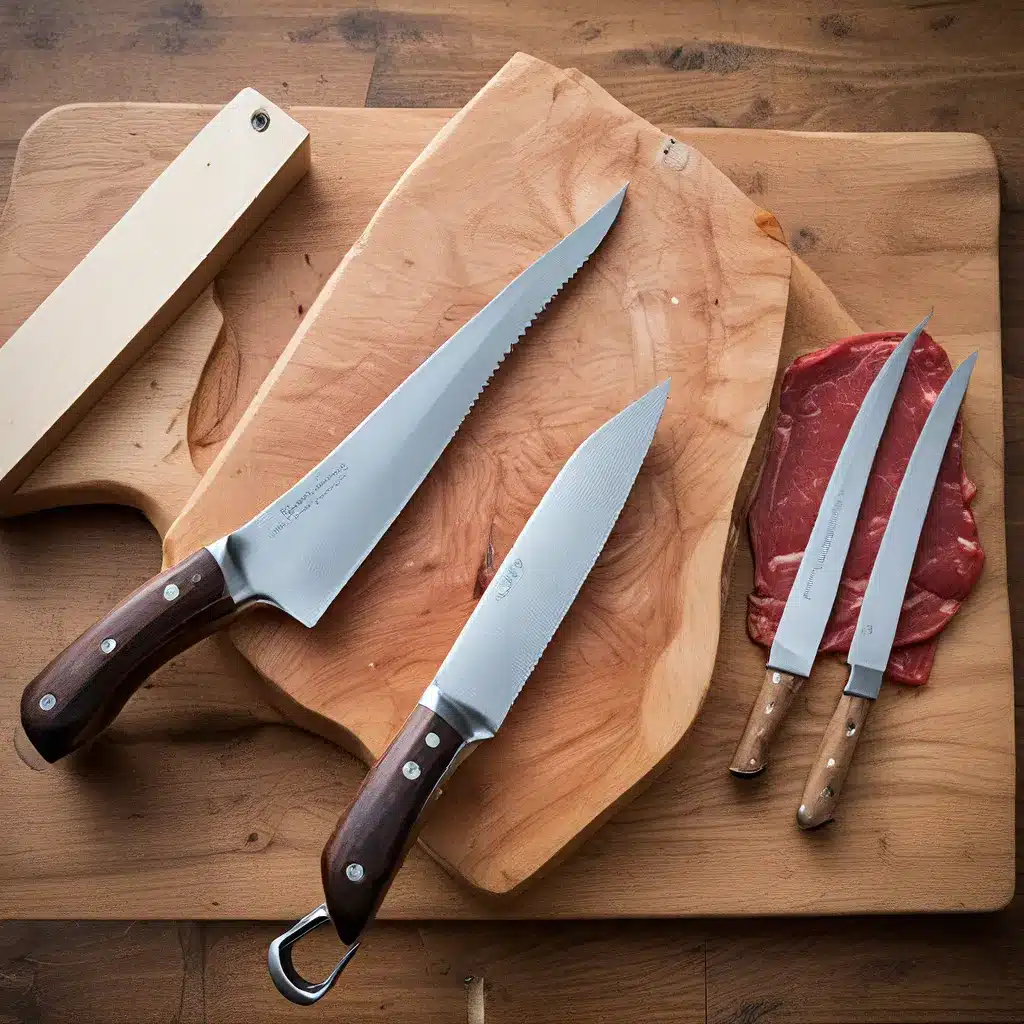
As a self-proclaimed kitchen enthusiast and amateur chef, I’ve always had a fascination with the art of butchery. There’s something immensely satisfying about taking a whole animal and transforming it into succulent, flavorful cuts of meat. And at the heart of this process, the humble boning knife reigns supreme.
Unlocking the Power of Boning Knives
Boning knives are the unsung heroes of the culinary world. These slender, flexible blades are designed to navigate the intricate contours of animal anatomy, allowing you to separate meat from bone with precision and ease. Whether you’re tackling a whole lamb or breaking down a beef tenderloin, the right boning knife can make all the difference.
One of the key benefits of a boning knife is its ability to maneuver in tight spaces. Unlike larger, bulkier chef’s knives, boning knives are nimble and agile, allowing you to delicately trace the natural curves and edges of the meat. This makes them invaluable when it comes to tasks like removing the ribcage or extracting the tenderloin – procedures that require a deft touch and a keen understanding of the animal’s structure.
But don’t let the boning knife’s delicate appearance fool you. These blades are also incredibly strong and durable, capable of handling the rigors of heavy-duty butchering. I’ve personally used my trusty boning knife to tackle everything from quartering a whole hog to filleting a large salmon. The key is to choose the right blade length and flexibility for the task at hand.
Selecting the Perfect Boning Knife
When it comes to boning knives, the options can be overwhelming. From straight-edged to curved blades, flexible to stiff, the choices seem endless. But fear not, my fellow culinary adventurers, for I’ve done the research to help you find the perfect match.
One of the first factors to consider is the blade length. Boning knives typically range from 4 to 8 inches, with each size offering its own advantages. Shorter blades (4-6 inches) are ideal for delicate work, such as separating tenderloin from the backbone or trimming silverskin from a roast. Longer blades (6-8 inches), on the other hand, excel at larger cuts, like separating ribs or breaking down a whole animal.
Another crucial factor is the blade flexibility. Flexible boning knives, with their thin, supple blades, are perfect for navigating tight spaces and following the contours of the meat. They’re the go-to choice for intricate deboning tasks. Stiffer blades, however, are better suited for heavy-duty cutting through tough connective tissue or large, dense bones.
To further complicate matters, boning knives come in a variety of blade shapes, each with its own unique characteristics. Straight-edged blades are great for precision work and clean, even cuts, while curved blades excel at separating meat from bone with a natural, flowing motion.
Ultimately, the best boning knife for you will depend on the type of butchery you’ll be doing and your personal preferences. Herman Knives offers a wide selection of high-quality boning knives, each designed to tackle a specific task with efficiency and finesse.
Mastering the Art of Boning
Now that you’ve got the lowdown on boning knives, it’s time to put them to the test. But before you dive in, it’s crucial to understand the proper techniques for using these specialized blades.
One of the most important things to remember is to always work with a sharp knife. Dull blades can lead to ragged, uneven cuts and can even be dangerous, as they require more force to penetrate the meat. Be sure to regularly sharpen your boning knife using a honing steel or sharpening stone.
Another key technique is to use a smooth, slicing motion when cutting. Avoid the temptation to saw back and forth, as this can damage the meat and lead to uneven, jagged edges. Instead, gently guide the blade through the meat, using a combination of light pressure and gentle sawing.
When it comes to boning a whole animal, it’s essential to familiarize yourself with the anatomy. Take the time to study the skeletal structure and the placement of major muscle groups. This knowledge will help you navigate the task with confidence, cutting along the natural seams and avoiding costly mistakes.
And let’s not forget the importance of safety. Boning knives are incredibly sharp, so it’s crucial to handle them with care. Keep your fingers clear of the blade, and be mindful of your hand positioning to prevent accidental cuts. It’s also a good idea to invest in a cutting glove** to protect your non-dominant hand.
The Joy of Butchery
As I’ve discovered through my own culinary adventures, the art of butchery is a truly rewarding experience. It’s a chance to connect with the food you prepare, to understand the animal you’re working with, and to hone your skills as a chef.
With the right boning knife in hand, the process of breaking down a whole animal becomes less daunting and more enjoyable. You’ll be able to extract every last morsel of flavor, maximize the yield of your cuts, and impress your dining companions with your newfound butchery prowess.
So, my fellow culinary enthusiasts, I encourage you to embrace the humble boning knife and embark on your own butchering journey. Who knows, you might just discover a hidden passion for this age-old craft.
Happy butchering!


